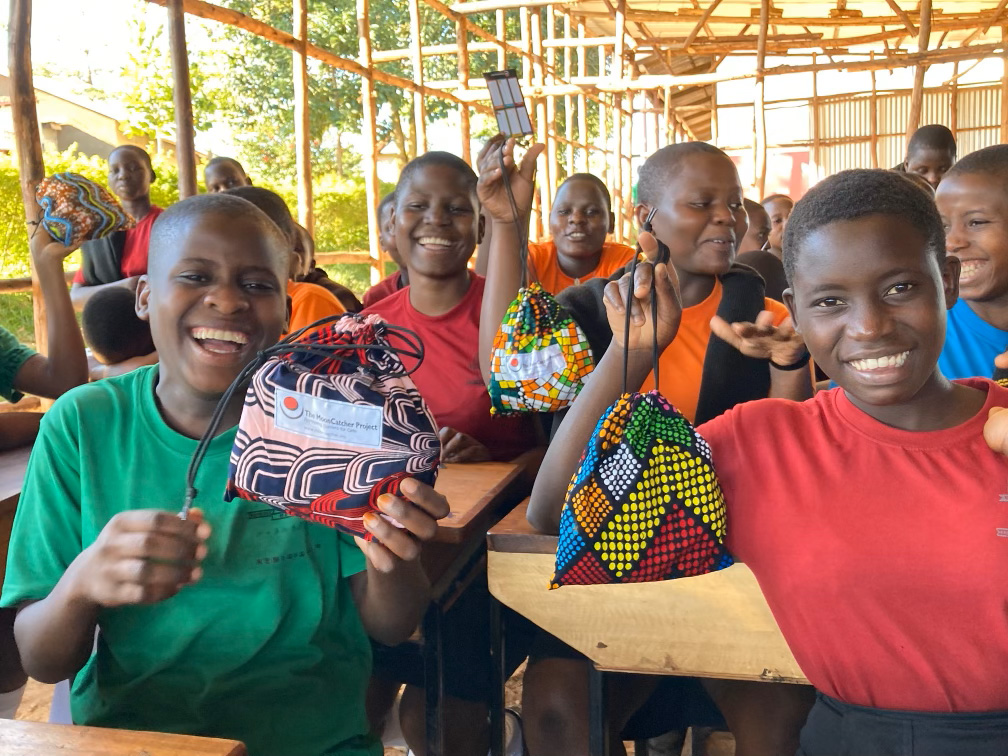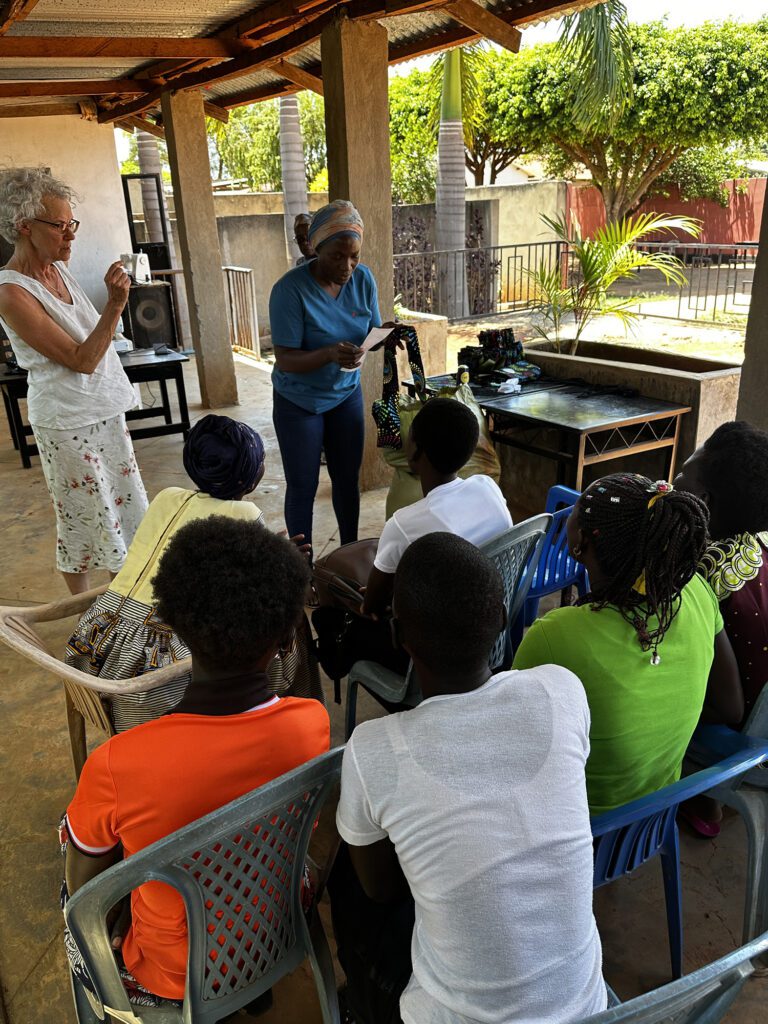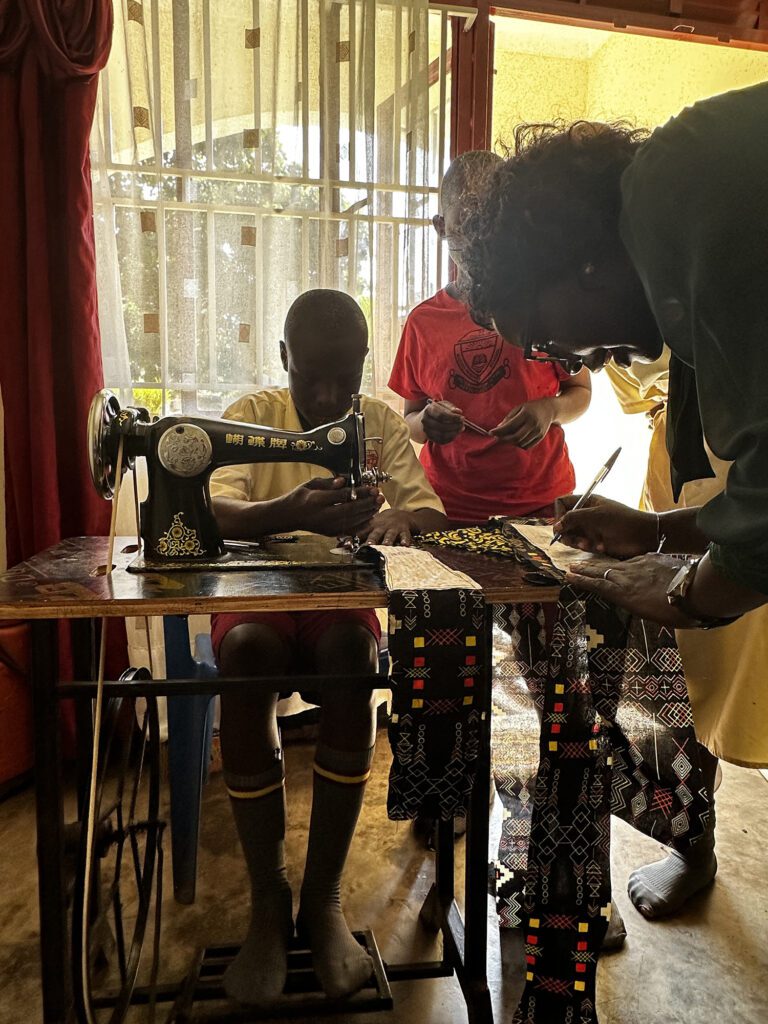
Girls in a Uganda classroom hold up their MoonCatcher Project kits.
If you have ever visited a construction site, then you are likely familiar with Tyvek?the synthetic material that wraps buildings to protect them from the elements. You may not realize, however, that leftover scraps of this material can help change the lives of girls and women worldwide.??
Tyvek is essential to the mission of The MoonCatcher Project, a nonprofit based in Schenectady, New York, that provides washable, reusable menstrual pads for girls living in poverty around the world to help them stay in school. Turkel Design is supporting The MoonCatcher Project by donating Tyvek and connecting the organization to construction companies that can do the same.? High school junior Chloe Wright, a MoonCatcher Project volunteer and daughter of a Turkel Design partner, facilitated the collaboration.
Executive Director Ellie von Wellsheim founded The MoonCatcher Project in 2013 after learning of this global problem: girls dropping out of school because of lack of access, both to menstrual pads and to education about how to manage their cycles. ?If a family is subsisting on a dollar per day, that dollar is being spent on food, not pads,? says Assistant Director Charlotte Mack. ?So when girls start to menstruate, suddenly they?re staying home from school five, six, seven days per month. They don?t have access to remote learning?they fall behind and eventually drop out.??

Ellie von Wellsheim and Project Coordinator Phoebe Nabwami teach sewing in Pallisa, Uganda.
An accomplished sewer, von Wellsheim designed a model for a reusable, washable menstrual kit using common materials such as fabric, fleece, shoelaces, and rip-stop nylon. The kit, however, needed a waterproof material for extra leak protection. When a friend suggested the numbered bib on the back of a marathon runner, made of Tyvek, von Wellsheim realized this would fit the bill.??
Since then, The MoonCatcher Project has found an expansive need for its services, providing menstruation kits to more than 200,000 girls to date, as well as a ?menstrual health curriculum? that fills a critical gap in health education. Back home, they rely heavily on volunteers, who meet once or twice per month at sewing circles called ?MoonBees? in libraries, places of worship, and other locations around the New York State capital region. They also partner with social-service and faith-based organizations to get reusable menstrual supplies to women in the region who can?t afford them.???
Via their international program coordinators, The MoonCatcher Project has established seven sewing guilds in Uganda, Kenya, and Malawi, even providing sewing machines that local tailors can then use for their own businesses. Aiming to provide as much economic support to these countries as possible, they typically purchase materials locally?with the exception of Tyvek, which is difficult to source in Africa.?
The collaboration with Turkel Design came about after Chloe Wright attended a MoonBee. Inspired to get more involved in the mission, she and her father, Turkel Design Partner Jake Wright, realized that the architecture firm’s connections with homebuilders could generate a steady source of Tyvek.
The importance of Tyvek to The MoonCatcher Project is a reminder that everyday items that seem negligible to some can make a transformative difference to others. ?If you?re having a custom home built, you might not think that window cutouts from the Tyvek wrapping your home can help a girl halfway around the world stay in school,? says Mack. ?But they can.???

Phoebe Nabwami teaches students to sew Tyvek into menstrual kits.
Mack says that The MoonCatcher Project receives numerous requests for help, mostly via its website and social media accounts, from more schools throughout the world than it is able to serve. People in the Schenectady area can help by volunteering at a MoonBee. The best way to help the organization serve even more girls and women in poverty is by making a contribution to its 2024 campaign.??
For Turkel Design, The MoonCatcher Project is a reminder that the architecture and construction industries can always do more to lessen their impact on the environment and give back to their communities. ?One of our goals as a practice is to reduce the amount of wasted material involved in building a new home,? says Jake Wright. ?With that in mind, we?re grateful to The MoonCatcher Project for not only finding a way to keep leftover Tyvek out of landfills, but to empower girls worldwide in the process.??



